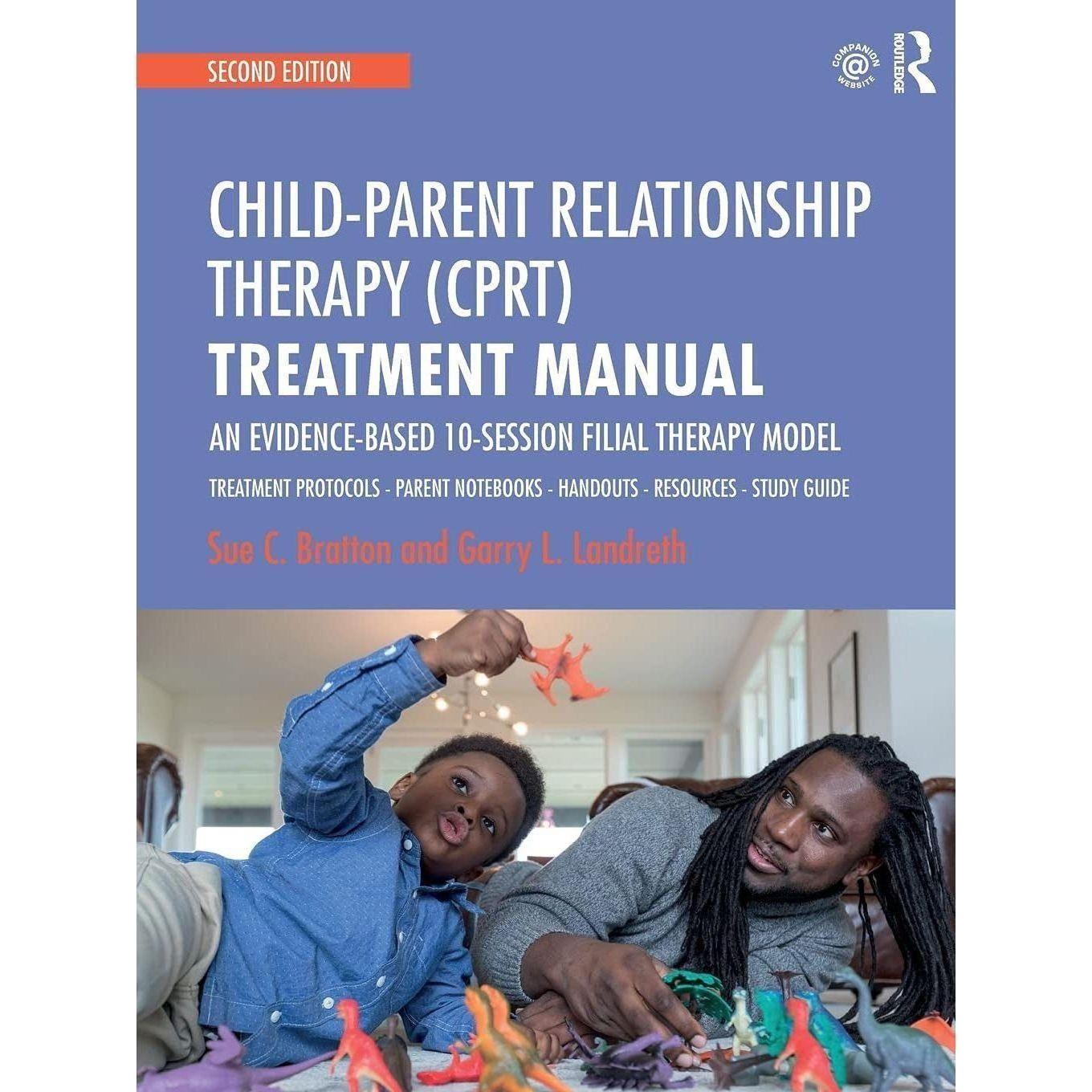

Child-Parent Relationship Therapy (CPRT) Treatment Manual: an Evidence-Based 10-Session Filial Therapy Model
This newly expanded and revised edition of the Child-Parent Relationship Therapy (CPRT) Treatment Manual is the essential companion to the second edition of Child-Parent Relationship Therapy (CPRT). The second edition is updated to include four new CPRT treatment protocols and parent notebooks adapted for specific populations: parents of toddlers, parents of preadolescents, adoptive families, and the teacher/student relationship, along with the revised original CPRT protocol and parent notebook for ages 3-10.
This manual provides the CPRT/filial therapist a comprehensive framework for conducting CPRT. Included are detailed outlines, teaching aides, activities, and resources for each of the 10 sessions. The manual is divided into two major sections, Therapist Protocol and Parent Notebook, and contains a comprehensive CPRT Training Resources section along with an index to the accompanying Companion Website.
The accompanying Companion Website contains all necessary and supplemental training materials in a format that allows for ease of reproduction and enhanced usability including the following:
- CPRT Protocol―Ages 3 to 10 and Parent Notebook
- Toddler Adapted CPRT Protocol and Parent Notebook
- Preadolescent Adapted CPRT Protocol and Parent Notebook
- Adoptive Families Adapted CPRT Protocol and Parent Notebook
- Teacher/Student Adapted Protocol and Teacher Notebook
- Therapist Study Guide
- Training Resources, Teaching Aides and Supplemental Materials
- Marketing Materials
- Assessments
Drawing on their extensive experience as professional play therapists and filial therapists, Bratton and Landreth apply the principles of CCPT and CPRT in this easy-to-follow protocol for practitioners to successfully implement the evidence-based CPRT model. By using this manual and the accompanying Companion Website in conjunction with the CPRT text, filial therapists will have a complete package for training parents in CCPT skills to act as therapeutic agents with their own children.
Choose options


